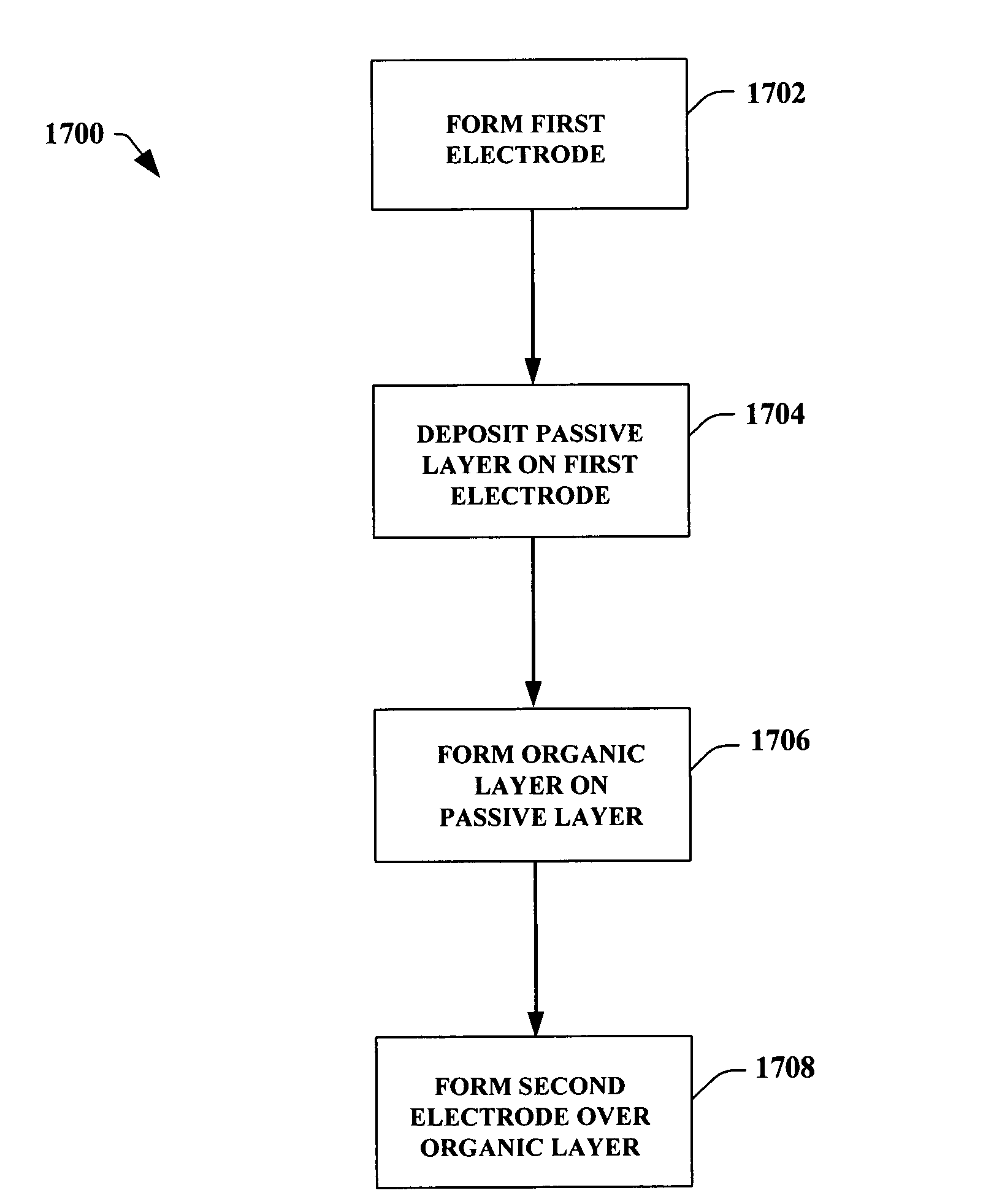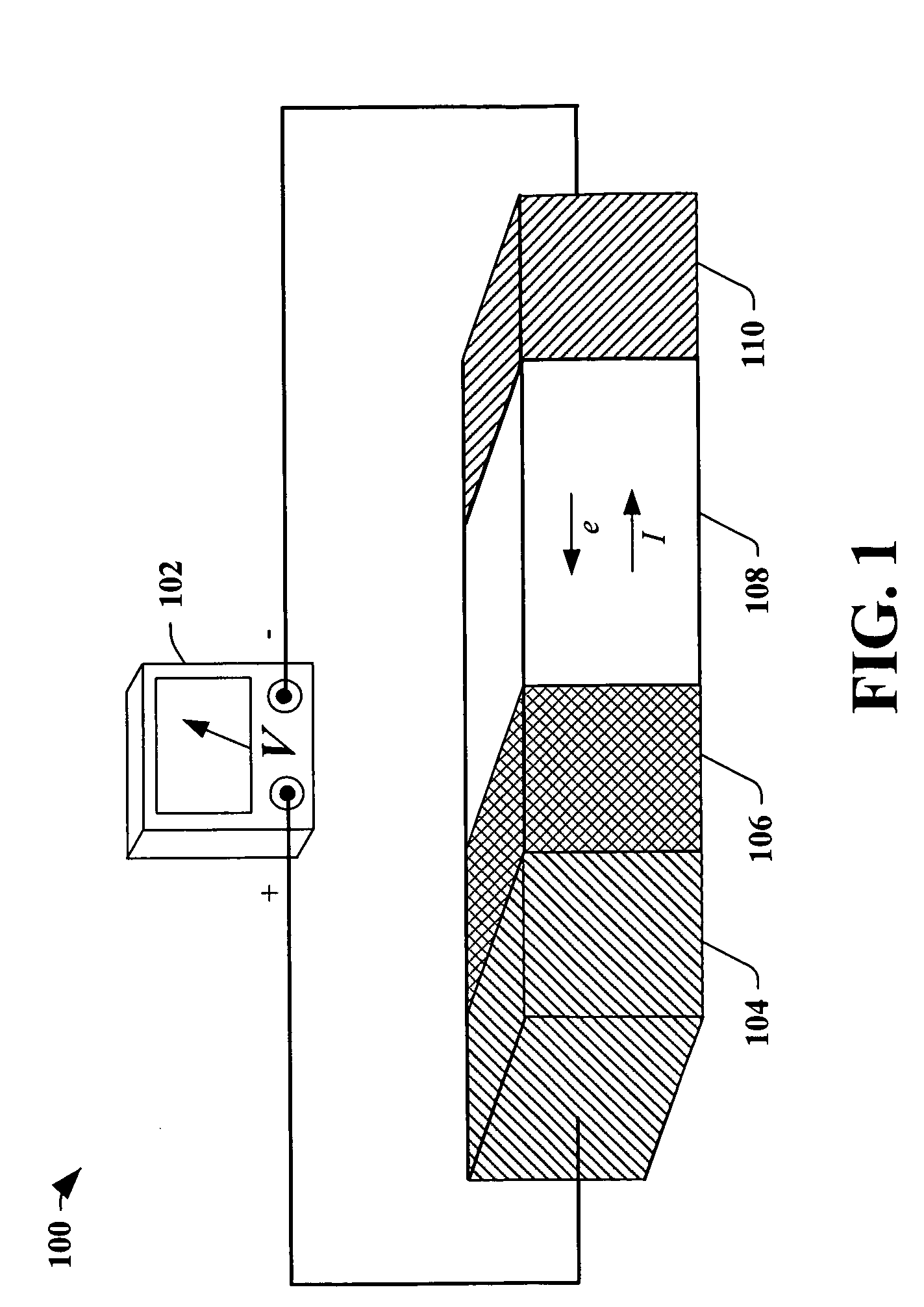Variable density and variable persistent organic memory devices, methods, and fabrication
a memory device and variable density technology, applied in thermoelectric devices, solid-state devices, instruments, etc., can solve the problems of volatile memory devices losing information, slowing down the speed of other types of storage devices, and increasing the volume, use and complexity of computers and electronic devices, etc., to achieve the ability to store information short term and/or, and improve the efficiency of storag
- Summary
- Abstract
- Description
- Claims
- Application Information
AI Technical Summary
Benefits of technology
Problems solved by technology
Method used
Image
Examples
Embodiment Construction
[0034]The following is a detailed description of the present invention made in conjunction with the attached figures, wherein like reference numerals will refer to like elements throughout.
[0035]The present invention is an organic memory device that has the capability to alter its density and level of persistence by changing a resistive state of the organic memory device. The resistive state is changed by applying a voltage potential across an organic memory cell composed of a selectively conductive decay media. A single cell can be set at different resistances to allow multiple bit states per cell which provides a higher device density. At high resistive states, a device's density can be altered in a wide range. For example, at a high resistive state of approximately 10,000 ohms, a single cell can have variable states in a substantially similar order of magnitude with a substantially similar level of persistence. Therefore, the present invention provides higher density memory devic...
PUM
 Login to View More
Login to View More Abstract
Description
Claims
Application Information
 Login to View More
Login to View More - R&D
- Intellectual Property
- Life Sciences
- Materials
- Tech Scout
- Unparalleled Data Quality
- Higher Quality Content
- 60% Fewer Hallucinations
Browse by: Latest US Patents, China's latest patents, Technical Efficacy Thesaurus, Application Domain, Technology Topic, Popular Technical Reports.
© 2025 PatSnap. All rights reserved.Legal|Privacy policy|Modern Slavery Act Transparency Statement|Sitemap|About US| Contact US: help@patsnap.com



